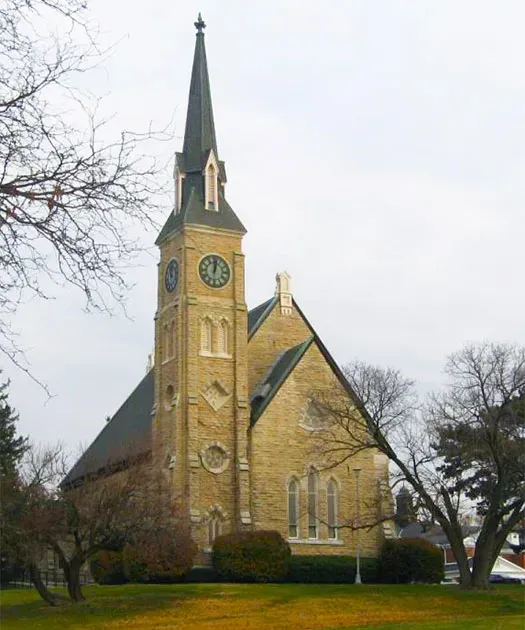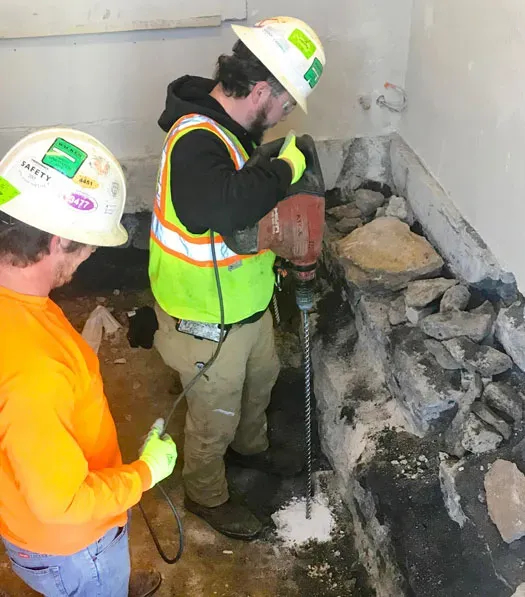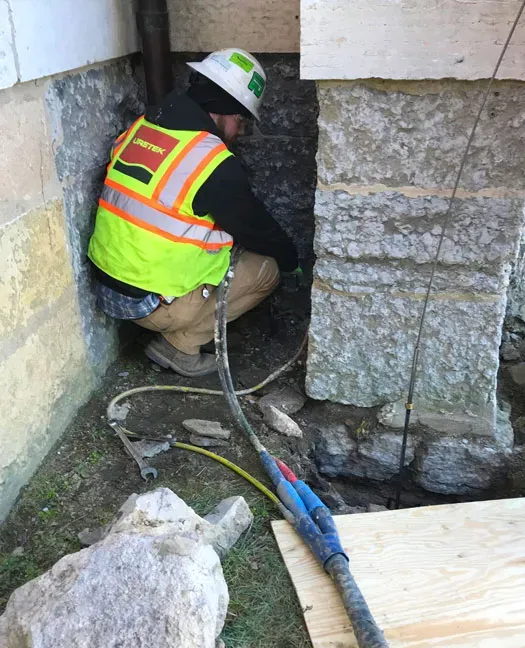150 Year-Old Chapel Stabilized In Dayton, Ohio

Problem
The Dayton Veterans Affairs Protestant Chapel, an important historical landmark in Ohio, was constructed in the 1860s. Over the years since, several additions have been completed for the chapel. As the culturally important chapel neared its 150th birthday, a large crack opened on the west face of the original bell tower, running from ground level to the top of the tower. Due to the age and height of the structure, the ominous bell tower crack presented a critical safety issue. The tower footings were constructed from stacked limestone bound with mortar. Engineers knew that fastened systems like push or helical piles would create torsion that would damage or break the footings. Also, project engineers understood that any excavation around the foundations would likely relieve earth pressure and lead to buckling of the stacked stone footings. The historic chapel’s iconic bell tower needed a reliable fix fast, and project engineers reached out to URETEK.
Analysis
The soils around the chapel were analyzed following the collection of core samples by a third-party contractor. Soil borings showed bedrock at about 12 feet below grade. The foundations varied from six feet to 10 feet below grade. The soil samples indicated that soft clay soils were present above the bedrock and beneath the footings, and likely led to the settlement issues with the bell tower.

Solution
After consultation with project engineers and a review of all soil analyses conducted at the site, URETEK Deep Injection® (UDI) was agreed upon as the best solution for the site and the circumstances. URETEK crews arrived on site and quickly injected high-density polyurethane into the soils beneath the footings to mitigate the bell tower settlement issue.
Result
Upon completion of the UDI, the Dayton VA Protestant Chapel was stabilized, and the dangerous settlement that had threatened the bell tower was addressed to the satisfaction of the project engineers. UDI provided a solution that did not cause any torsion in the footings. Most importantly, URETEK’s solution required no excavation. While each footing injection point required strict assessment, the flexibility of UDI allowed crews to adjust equipment setup and injection design to meet the project’s needs
URETEK Deep Injection® (UDI)
Widely referenced throughout our industry, UDI involves the injection of structural polymer into base and sub-grade soils to increase the load-bearing capacity. This is achieved by injecting the polymer through small holes drilled directly through the pavement structure to depths determined by site-specific analysis. Our URETEK 486 Star® material flows easily into voids and weak zones within the soil mass below. Through a controlled chemical reaction, the expanding polymer compacts surrounding soils and applies a controlled pressure on targeted areas of the affected pavement above. If needed, a multi-injection design plan is utilized to gently return the pavement to its original grade. The composite material quickly cures into a strong, dimensionally stable, and water-resistant geo-material, providing years of reliable service.
URETEK 486 Star®
URETEK 486 Star® polymer is a two-component, high-density, expanding thermoset polyurethane system. It was developed to be the ideal solution for under-sealing, void filling, lifting of settled pavement, stabilization and stiffening of weak soils, and for encapsulating and sealing buried infrastructure. URETEK 486 Star® is environmentally inert, non-toxic, and resists underground water erosion or weakening due to its industry-leading hydrophobic properties.
